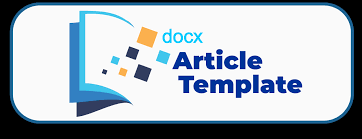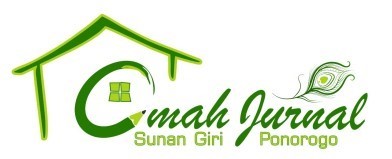Community Empowerment through Utilization of Rice Husk Waste in Cirebon Regency
DOI:
https://doi.org/10.37680/amalee.v4i2.3012Keywords:
husk, recycling, sandal shoe racks, wasteAbstract
The amount of rice production in Indonesia every year is always increasing. The results of the rice mill produce waste material, namely husks. Along with the increase in rice production, the amount of rice husk waste has also increased. The purpose of this service is to assist the community in utilizing husk waste to make a useful product. The approach used in implementing the KKN program for the people of Jagapura Kulon Village, Gegesik District, Cirebon Regency, is a Participatory Rural Appraisal (PRA) with five stages of design thinking. The dedication results show that the shoe rack and sandals that will be made use eco-friendly materials that use the waste from rice husks. The culture of reuse, reduce and recycle must also be applied to organic waste to reduce the use of new materials or materials. The manufacture of shoe and sandal racks is also expected to reduce the felling of trees used to make conventional shoe racks made of wood. Through RASENDAL products, we can reduce the use of new materials using unused waste.
References
Alyanada, A., & Iskandar, I. (2023). Peran Aliansi Masyarakat Adat Nusantara dalam Mendukung Implementasi United Nations Declaration on the Rights of Indigenous Peoples di Indonesia. JILS (Journal of International and Local Studies), 7(1), 1–15.
Arisona, R. D. (2018). Pengelolaan sampah 3R (Reduce, Reuse, Recycle) pada pembelajaran IPS untuk menumbuhkan karakter peduli lingkungan. Al Ulya: Jurnal Pendidikan Islam, 3(1), 39–51.
Basry, W., & Amir, Y. (2019). Peningkatan Kualitas Batako dengan Penambahan Abu Sekam Padi. Siimo Engineering: Journal Teknik Sipil, 3(1), 11–16.
Bawono, I. R. (2019). Optimalisasi potensi desa di Indonesia. Gramedia Widiasarana Indonesia.
Darwis, R. S., Resnawaty, R., & Nuriyah, E. (2020). Peningkatan Sensitivitas Kepemimpinan Lokal Dalam Pengelolaan Sungai Citarum Melalui Teknik Participatory Rural Appraisal (Pra) Di Desa Rancamanyar. Kumawula: Jurnal Pengabdian Kepada Masyarakat, 3(1), 48–59.
Ikhsanuddin, H., & Asyari, S. (2022). RE-DESIGN MEJA PENOMORAN CYLINDER MENGGUNAKAN PENDEKATAN ANTROPOMETRI DI PT. SMI. Journal Mechanical and Manufacture Technology (JMMT), 3(2), 118–127.
Jurnal, C., Kriswantriyono, A., Fauziyah, E., & Pratiwi, S. D. (2022). Integrasi Dan Dampak Program Pertanian Terpadu Sistem Inovasi Sosial Kelompok Setaria (Tante Siska). Jurnal Resolusi Konflik, CSR Dan Pemberdayaan (CARE), 7(1), 37–48.
Mukti, A. D., & Purba, H. H. (2022). Penerapan Metode 3R (Reuse, Reduse, Recycle) dalam Pengelolaan Limbah Domestik dan B3 untuk Meningkatkan Status Proper Hijau di PT. XYZ. Jurnal Media Teknik Dan Sistem Industri, 6(2), 124–131.
Putri, G. R. N., & Okatini, M. (2023). Pembuatan Video Tutorial Bedak Dingin Berbahan Dasar Beras dan Ekstrak Singkong. Jurnal Tata Rias, 13(1), 39–48.
Que, V. K. S., Prasetyo, S. Y. J., & Fibriani, C. (2019). Analisis Perbedaan Indeks Vegetasi Normalized Difference Vegetation Index (NDVI) dan Normalized Burn Ratio (NBR) Kabupaten Pelalawan Menggunakan Citra Satelit Landsat 8. Indonesian Journal of Computing and Modeling, 2(1), 1–7.
Rhofita, E. I. R. (2022). Optimalisasi Sumber Daya Pertanian Indonesia untuk Mendukung Program Ketahanan Pangan Dan Energi Nasional. Jurnal Ketahanan Nasional, 28(1), 82–100.
Rustiawan, E., Jannah, H., & Mirawati, B. (2017). Pengaruh media tanam terhadap pertumbuhan benih okra (Abelmoschus esculentus) lokal Sumbawa sebagai dasar penyusunan buku petunjuk praktikum fisiologi tumbuhan. Bioscientist: Jurnal Ilmiah Biologi, 5(1), 27–33.
Suryadi, S., Sulistyaningrum, D. E., Fauzan, I., Rahmawati, R., Fauzy, F., & Saputra, F. A. (2023). Pemanfaatan Limbah Sekam Padi sebagai Media Tanam Hidroponik untuk Meningkatkan Pendapatan Petani. JIIP-Jurnal Ilmiah Ilmu Pendidikan, 6(2), 1176–1183.
Syaiful, F. L., Dinata, U. G. S., & Hidayattullah, Y. (2018). Pemberdayaan masyarakat melalui pemanfaatan limbah sekam padi sebagai bahan bakar kompor sekam yang ramah lingkungan di Kinali, Pasaman Barat. Buletin Ilmiah Nagari Membangun, 1(3), 62–69.
Udjianto, T., Sasono, T., & Manunggal, B. P. (2021). Potensi Sekam Padi sebagai Bahan Bakar Alternatif PLTBm di Sumatera Barat. Jurnal Teknik Energi, 11(1), 11–18.
Yanuartono, Y., Indarjulianto, S., Purnamaningsih, H., Nururrozi, A., & Raharjo, S. (2019). Fermentasi: metode untuk meningkatkan nilai nutrisi jerami padi. Jurnal Sain Peternakan Indonesia, 14(1), 49–60.
Downloads
Published
How to Cite
Issue
Section
License
Authors who submit manuscript retain its copyright and grant Amalee right of first publication licensed under a Creative Commons Attribution-ShareAlike 4.0 International License (CC BY-SA 4.0) that allows others to access (search, read, download, and cite), share (copy and redistribute the material in any medium or format) and adapt (remix, transform, and build upon any material) the work for any lawful purpose, even commercially with an acknowledgement of the work's authorship and initial publication in Amalee: Indonesian Journal of Community Research and Engagement.














